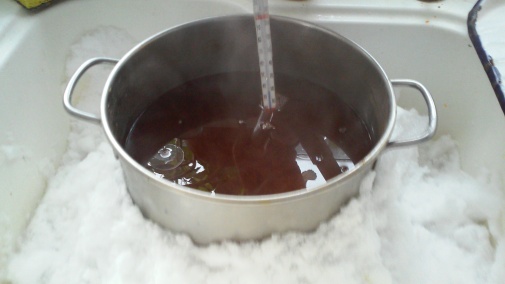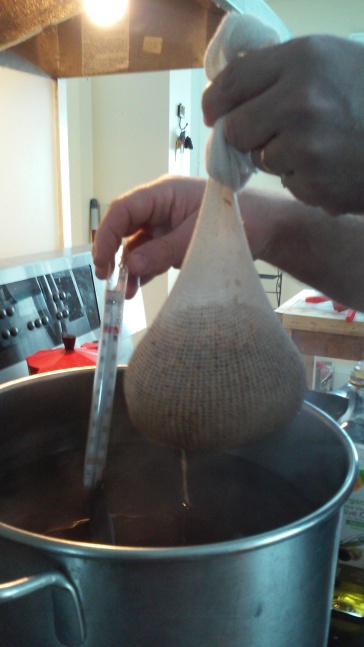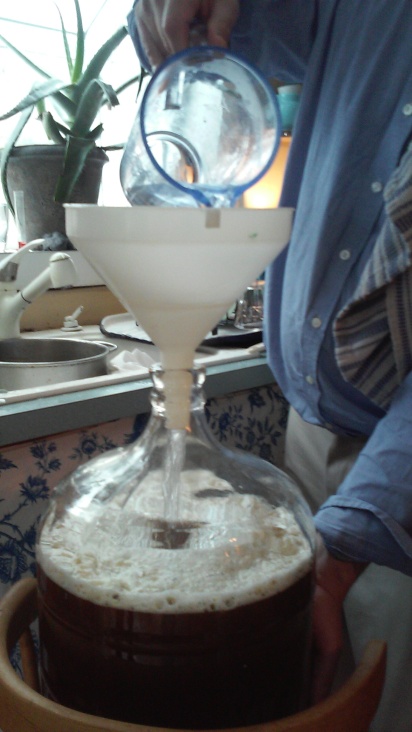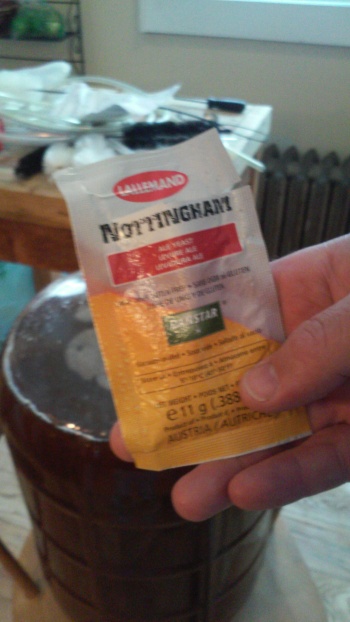As it is the first week of Lent I am congratulating myself on the steps that I have taken to prepare well for Easter.
First I have made the usual meaningful but ordinary commitments towards keeping my Lenten resolutions. Here it is – already day two and so far so good!
Second, I have prepared a new batch of English Pale Ale which will be ready precisely on Easter Sunday.
You see, again I need to point out how Liberal Education endows its recipient with enormous power to face crosses and tribulations. It enables one to scan bleak horizons, scope out dark places, examine desert wastes and find the spark of hope, the point of light, the candle flickering ever so faintly at the end of the difficult path!
But in my case, I do not see a flickering candle at the end of this years’ Lenten journey. No, I see a burst of glory and the veritable Super Nova, that is Christ’s Resurrection from the tomb, and what’s more, I also see over two cases of a very fine Pale Ale, some of which will enable me to celebrate that Resurrection with more propriety.
Lent was specifically designed for brewing beer. The reason for this is obvious. Beer takes exactly 40 days (more or less) to ferment and grow from a weak sweet slop of “wort” into a fine, noble, life-giving, heart-cheering, spiritually-enhancing liquid – whose foam raises itself in the glass as does incense in the chapel. Forty days exactly! (more or less)
Of course we fast and pray for forty days first primarily in imitation of our Lord. And then of course we are reminded of all the things that foreshadowed our Lord’s salvific action: the forty years that the Jews wandered in the desert, God’s cleansing of the world with rain and flood for forty days and forty nights in the time of Noah, Elijah’s fasting for forty days at Mt. Horeb, the people of Nineveh who fasted for forty days in sack-cloth and ashes and thus averted punishment, Moses’ fasting for forty days on Mount Sinai.
But the same period of time is also roughly speaking an ideal space for brewing beer, and therefore I think it is obvious that this is a fitting thing for Christians to do in the first week of Lent.
I haven’t thought carefully enough about the spiritual significance of brewing beer. I am certain that St Paul would see a deeper significance than I since he was the master of seeing the invisible things of God through the visible things of this earth.

All that Malt appears to lower the boiling point. We have to be very careful not to let it boil over.
Now apparently the superstitious among us think that Hops brings peaceful sleep, prevents nightmares and encourages “lucky number dreams.” But the liberally educated soul knows better and sees a deeper spiritual significance in Hops. Hops is a “bittering” herb. Hops puts the bitter in beer, and therefore Hops is an excellent herb to contemplate during Lent. Hops is to beer what salt is to food. And Christians should be the salt of the earth! By a simple extension we might say that Christians are the hops of the earth!

After brewing for sixty minutes, the wort needs to be cooled quickly. Winter snow is perfect – another reason why Lent is a time for brewing.
You might think that it is a stretch to see spiritual significance in brewing beer. But who can deny the subtle likeness – although through a glass darkly- that the fermentation process has to the development of virtue in the soul. The Wort will now go into a dark place (near my furnace under a towel) where the yeast will gradually disappear and something more powerful will result.
I can’t wait for Easter!


















How about Lent in the southern hemisphere………….er…..no snow…………
That’s a good objection… at least they have great temps for fermentation. Maybe you and I can start a snow export business!
Are you really suggesting that hops are a bitter herb such as the Jews used at Passover to represent the bitterness of slavery and slavery to sin, or that the yeast, as it disappears might be representative of the unleavening of the person? If you are making such a bold statement I’m on board 100%, where can I get a brew kit!
Great to have you on board! Check out http://www.homebrewing.org/Brewers-Best-Recipes_c_192.html for some great affordable kits! I love this place.
Beer (or the lack there of) played an important part, in the creation of the United States. The Pilgrims, landed at Plymouth Rock, because they ran out of beer.
Yep. So did slavery.
I have a direct ancestor that served in the Union Army during the civil war, and died of his war incurred aliments. Please say a Rosary for his soul, and the souls of all the war dead. “May the souls of the faithfully departed rest in peace.”
Gave it up one year. Never again.
We have an amazing batch of American Wheat going ourselves. Just pitched the yeast Saturday. Can’t wait for Easter!
The takeaway: Lent is good for what ales you.
Brilliant!!!
I home brew and have a few pieces of advice based on your brew setup.
1. Do a full volume boil. Rather than do the concentrated 2.5 gallon boil, boil 6 gallons. You get much better hop utilization and the malt profile is smoother and more likely to be free of off-flavours.
2. Build an immersion coil. It costs about £20, takes only a few minutes to make, and allows you to chill your wort in 15 minutes.
3. Use a yeast calculator to determine the correct number of yeast cells to pitch. Your yeast will thank you for it by producing a cleaner beer.
4. Temperature-control your fermentation. It can be quite affordable and will be a huge step towards professional-level beer.
Many thanks for your advice Nick. I assume that you mean I could do a six gallon boil with the same ingredients? Or do I have to add a proportionate larger amount of everything? I love the idea of building an immersion coil. Finally – what do you use for temperature control?
Yes, you would do a six gallon boil with the same ingredients. Instead of topping off the wort with fresh water, you would add the water to the kettle after steeping the specialty grains. You’d then bring it to a boil. I recommend 6 gallons of water, but you could also do 5.5 gallons, depending on the height-circumference ratio of your kettle. The extra half gallon to a gallon is intended to account for evaporation loss during the boil, but your kettle’s dimensions would change that.
For fermentation temperature control, I made one of these: http://threegodsbrewing.com/2013/04/14/son-of-fermentation-chamber-build-and-photos/
It’s basically an estate-style icebox, but allows me to keep my ales at a stable temperature, even when fermentation raises the internal temperature of the carboy by 2-4ºC over the ambient temperature. It’s also fun to build. Other people use swamp coolers, which are large plastic bins filled partially with water and ice. I find those to lack precision and aesthetic, however.